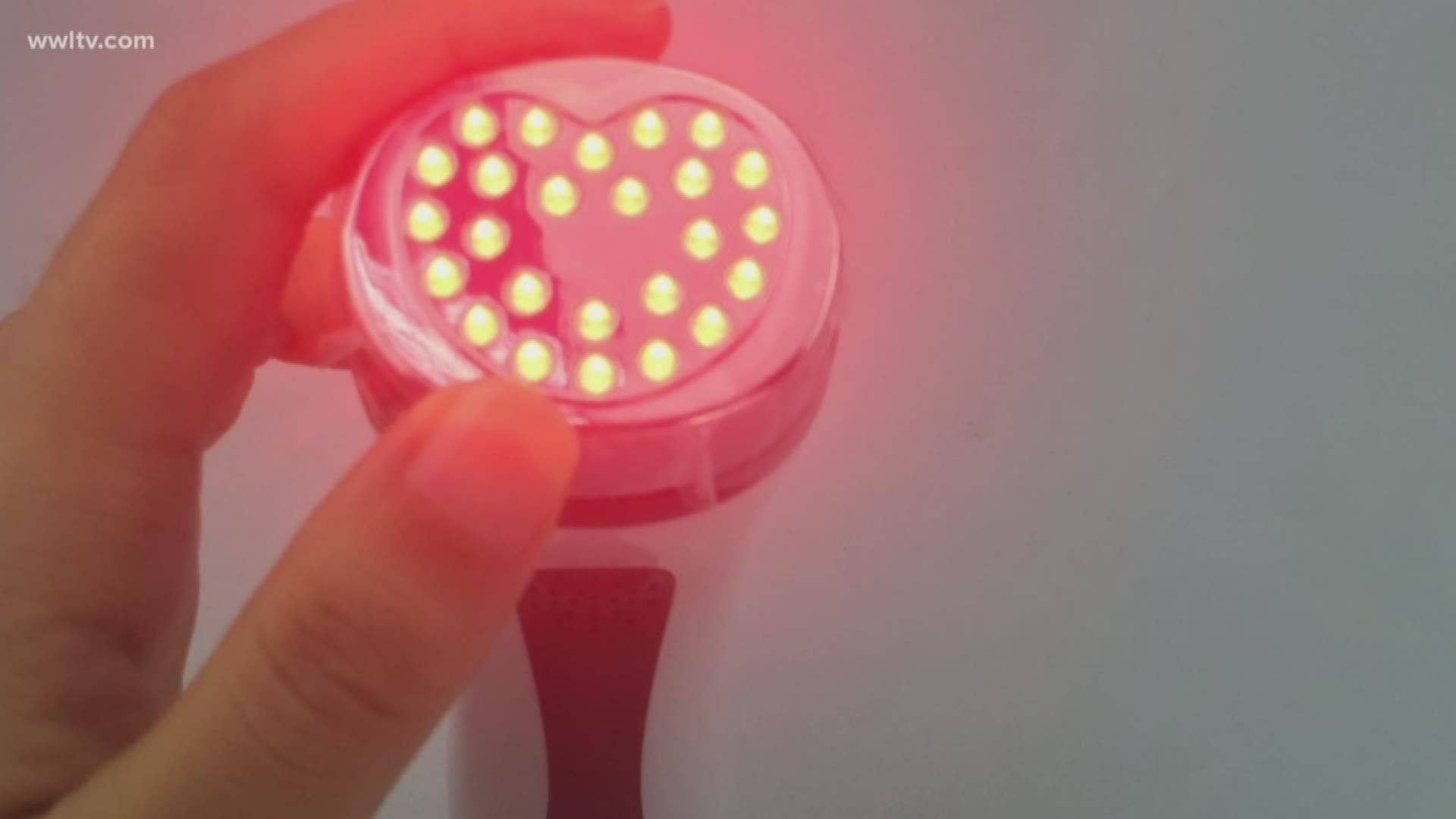NEW ORLEANS — You may have seen the ads on your Instagram feed for flashing red lights that promise smoother skin, or flashing blue lights that help treat acne.
We wanted to see if the home treatments really work.
In 2002, Wrinkle Free Friday showed the benefits of red led lights. Spas and dermatologists offices use them. Research then suggested it slows down cell aging and was used by NASA scientists.
Now ads are popping up on Instagram for at home red lights, promising to turn back time and sun damage. There are hand held versions and masks. So do they work?
Dr. Deirdre Hooper of Audubon Dermatology uses hand held red lights in her office and says they do help the skin.
"Red led lights have real science behind them. It happens to penetrate into your skin and stimulate collagen and elastic. There's a lot of data on wound healing and wrinkle reduction," said Dr. Hooper, a board-certified dermatologist in New Orleans.
There's no burning, scarring or down time. She says the lights are anti-inflammatory, so Dr. Hooper uses them after procedures to speed healing. But when it comes to at home devices she advises, to get the right dose, the light needs to be at 660 nanometers. And Dr. Hooper says you must cover and protect your eyes. But if you have brown patches, called melasma, it could make them worse.
RELATED: Tighten your Tinkler - program says it has proven results for women with incontinence
"I think there's more to be learned. I think the improvement might be really mild, so talk to your dermatologist about how to spend your beauty dollar, also your beauty minute."
So that's why Dr. Hooper thinks of red light as an add on to a good skin care regimen.
There is also another kind of light on the at home market. It's blue lights for acne.
"Blue light penetrates to the level of the hair follicle, and it's anti inflammatory, so it's going to help kill bacteria that are causing acne," explained Dr. Hooper.
She says hold the blue light on a pimple for 10 minutes, two to three times a day. Most importantly, it helps keep your fingernails off of it. Squeezing makes it worse.
Your home device should be around 420 nanometers.
So the bottom line is, for at home use, buy lights with the right power, use them correctly and have realistic expectations.
There are no studies on the effects of leaving red lights on longer than 30 minutes. So dermatologist recommend that you keep treatments shorter.

